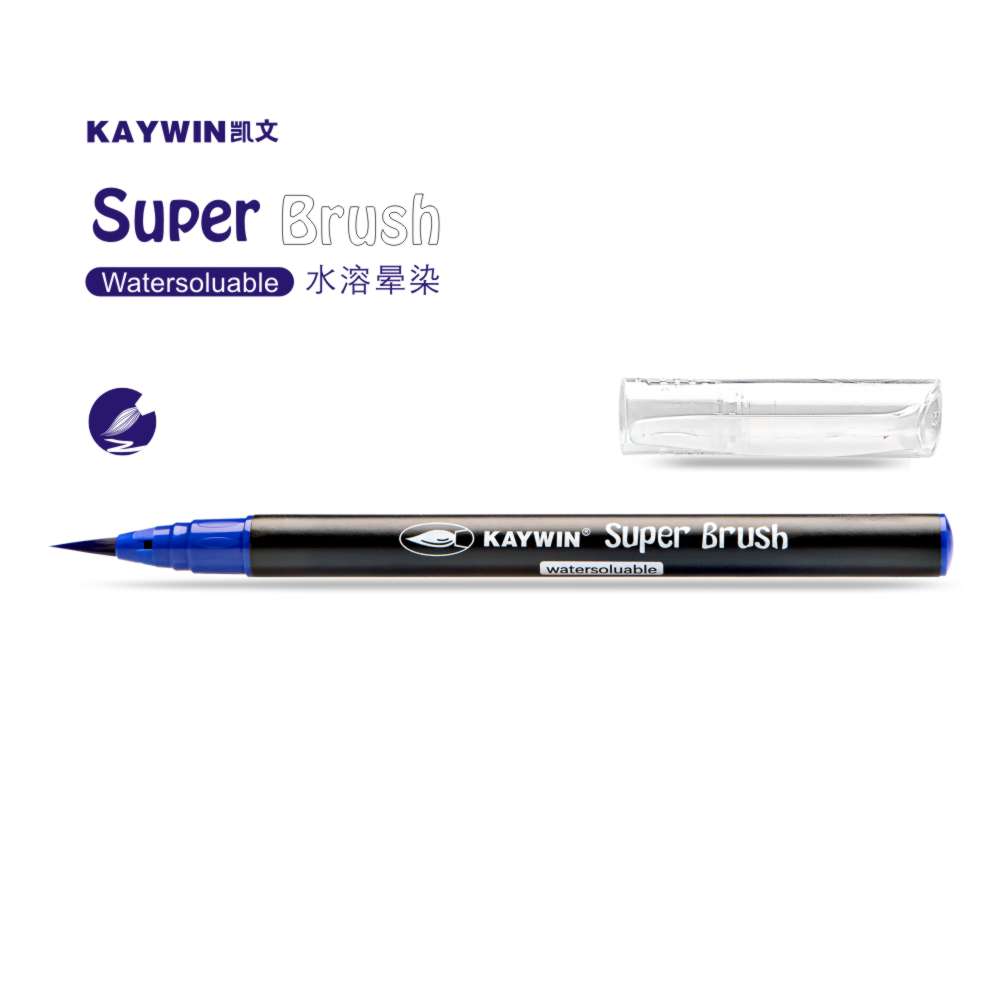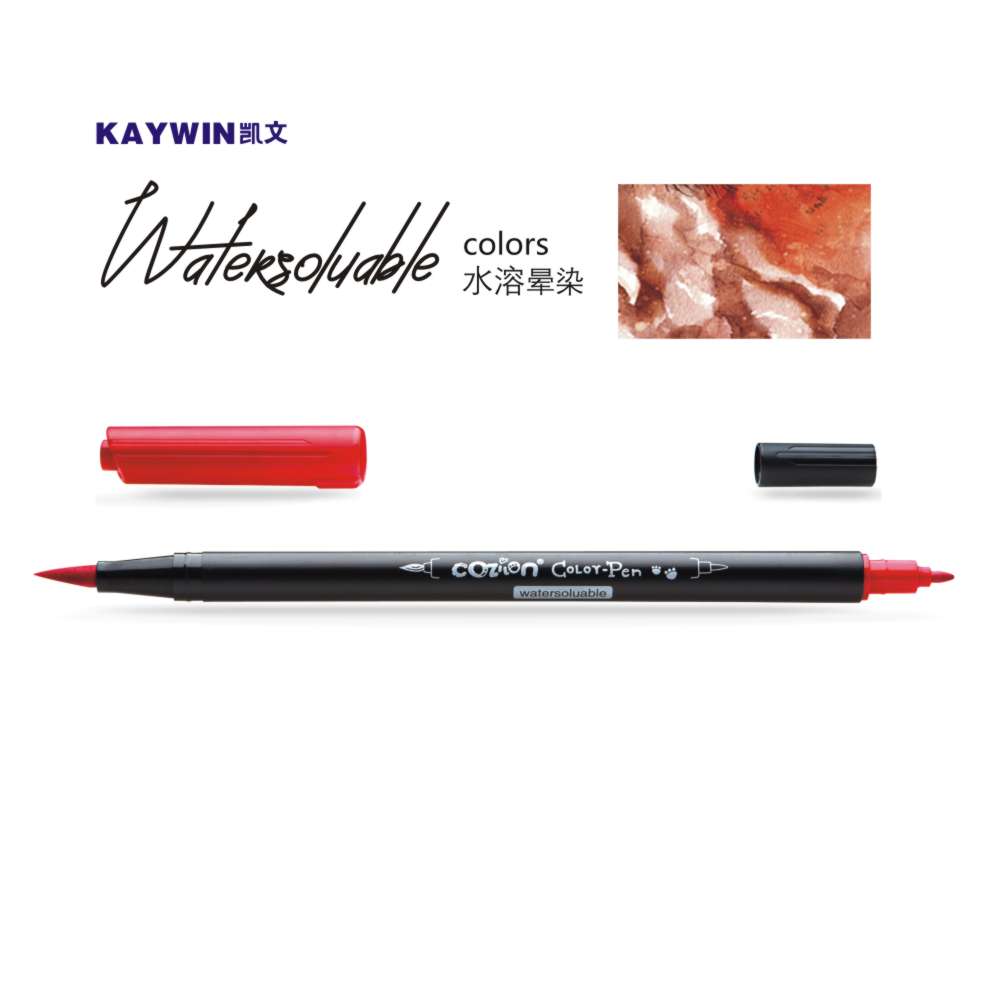Water-Soluble Markers: Everything You Need to Know
Water-soluble markers are essential in handcrafting and art projects because of their easily washable feature.
These markers can be used flexibly in various applications, such as quilting, embroidery, and other projects.
Moreover, handcrafters and artists can rely on the benefits of water-soluble marking pens, whether for temporary markings on fabric or different surfaces like paper and glass.
If you want to learn more about these markers, read on.
What is a water-soluble marker?
A water-soluble marker is an art tool primarily used to mark fabrics for sewing and embroidery works. This marker typically uses non-permanent or washable ink so that artists can easily remove the patterns on the fabric.
Water-soluble markers usually come in blue colors and work well on light-colored fabrics.
However, it’s important to note that water-soluble fabric markers can be difficult to remove on darker-colored and delicate fabrics, especially wool and silk.
This results in patterns reappearing after washing the fabric.
So, it’s better to test your water-soluble marking pen on a discreet part of the fabric before using it for your sewing projects.
What type of ink is water soluble?
Inks that are water soluble are the type that can be removed by water or upon contact with moisture.
Water-soluble inks work better in sketch or watercolor projects than permanent paintings that usually require waterproof inks.
To better understand their compositions, below is a simple illustration of the difference between water-soluble and waterproof ink:
Helpful Insight: Water Soluble vs Waterproof Ink
| Characteristics | Water-Soluble Ink | Waterproof Ink |
| Composition | The main solvent is water; the color is dye-based | The main solvent is oil; the color is pigment-based with particles that don’t dissolve in water |
| Reaction when in contact with water or moisture | Runs, smears, washes off easily | Highly resistant to water or moisture |
| Reaction when exposed to light | Fades over time | More lightfast and high resistance to light exposure |
| Artistic effects | Creates vibrant designs and textures as they can be easily blended with other colors | Creates stronger or more vivid colors |
| Archival quality | Not intended or suitable for long-term projects or permanent color quality | Can last up to 100 years when stored or preserved properly |
| Cleaning and maintenance of markers | Easy cleaning and maintenance needed | Needs regular cleaning and maintenance to prevent pigments from drying or clogging |
Interesting Read: How Do You Know If A Marker Is Water-Soluble?
Water-Soluble Fabric Marker Uses
Marking Your Fabric
Water-soluble fabric markers are perfect for quilting and embroidery projects, such as cross-stitching.
The washable ink in the markers allows sewers to conveniently adjust the drawing or cutting patterns without worrying about marker stains.
Temporary Pattern Marking on Other Surfaces
Water-soluble marking pens are not only used on fabric but they can be used in marking various surfaces, such as the following:
#1. Glass
Water-soluble marking pens can be written on glass surfaces like windows or glass boards.
Since the ink can be easily wiped off with a damp cloth, these markers are perfect for temporary notes or designs on glass surfaces.
#2. Whiteboard
Although dry-erase markers are commonly used for whiteboards, water-soluble marking pens can also be used for more colorful or bolder presentations.
They can be wiped off with water, making them a great option for non-permanent illustrations.
#3. Plastic
Water-soluble marking pens are suitable for writing on smooth plastic surfaces, such as containers or plastic boards. They adhere well and can be removed easily with a damp cloth or sponge.
#4. Mirrors
These markers can be used for decorative writing or designs on mirrors and windows, and the water-soluble ink can be easily washed off without leaving residue.
#5. Paper
Water soluble marking pens are ideal for arts and crafts on paper because they give off vivid colors that can be blended with water to create watercolor-like effects.
However, on regular paper, they are still erasable with a bit of moisture.
#6. Wood
Water-soluble marking pens work well on untreated or lightly treated wood surfaces.
They are great for temporary markings, designs, or notes on wooden items like furniture, wooden crafts, or construction projects.
The ink can be wiped off with a damp cloth, making them ideal for erasable marks during woodworking or creative projects.
However, the ease of removal may vary depending on the type of wood and its finish.
Smooth, non-porous wood surfaces will allow for easier ink removal, while rough or porous wood might absorb some ink, making it harder to wipe clean completely.
Relevant Product: Erasable Marker
Advantages of Using Water-Soluble Markers for Embroidery and Art Projects
Water-soluble marking pens are perfect for artists and handcrafters alike because of the ink’s washability.
Artists use water-soluble marking pens to create textured designs and watercolor-like effects by easily blending or layering different colors.
Sewers and handcrafters, on the other hand, primarily use water-soluble fabric markers to mark fabrics for cutting and design patterns.
Not only do these markers guide sewers for accuracy in the process, but they do not leave permanent stains on fabric after wash.
Check Product Here: Water-Soluble Sketch Marker
Water-Soluble Markers and Their Cons
Water-soluble marking pens cannot withstand direct or even subtle exposure to water or moisture.
These markers are not waterproof — they can be smeared off easily on almost any surface because they are water-based.
Another one is that water-soluble marking pens are not ideal for long-lasting projects like paintings.
These markers have low lightfastness, which means they can easily fade in light exposure.
So, it’s important to assess where you’ll be using water-soluble marking pens.
Water-Soluble Marker FAQs
What are water-based markers?
Water-based markers use ink that is primarily composed of water. The ink is non-toxic, quick-drying, and easy to remove from most surfaces.
They are popular for art projects, crafts, and educational activities because they offer vibrant colors while being easy to clean from skin and fabric.
Are Sharpies water-soluble markers?
No, Sharpies are not water-soluble markers. Sharpies use a permanent ink that is alcohol-based, which makes them resistant to water and smudging.
They are designed to be durable and work on various surfaces, unlike water-soluble markers, which can be easily erased or washed away.
Which ink is most soluble in water?
Dye-based inks are the most soluble in water. These inks dissolve easily, creating vibrant colors but lack water resistance.
Water-based markers and many washable markers use dye-based inks, which allow the ink to be removed or diluted with water when needed.
Are washable markers soluble?
Yes, washable markers are soluble in water. They are designed to be easily removed from most surfaces, including fabric, skin, and walls, with soap and water.
The ink in washable markers is water-based, making it easy to clean and perfect for children’s activities and temporary projects.
Water-Soluble Markers: Where to Find Wholesale Pens?
When looking for water-soluble marker pen manufacturers, it’s important to choose a reputable pen manufacturing company that offers high-quality products.
You can easily find wholesale pens by exploring a list of pen manufacturers that specialize in water-based inks like Kaywin.
Kaywin provides wholesale pens with logo customization, allowing you to brand your markers.
Additionally, Kaywin offers custom pens wholesale options, making it easier to order large quantities that meet your design needs.
Whether you’re seeking eco-friendly options or specialized markers, Kaywin can cater to your business needs.



